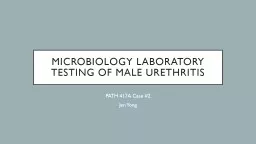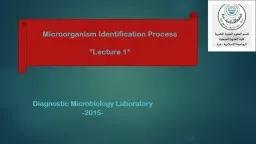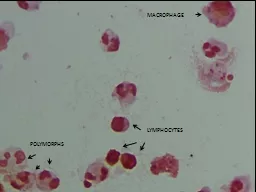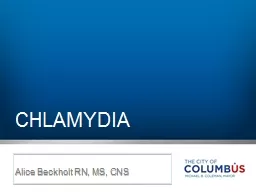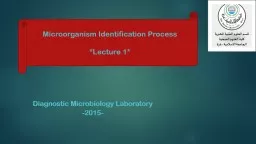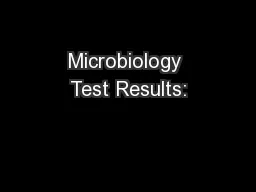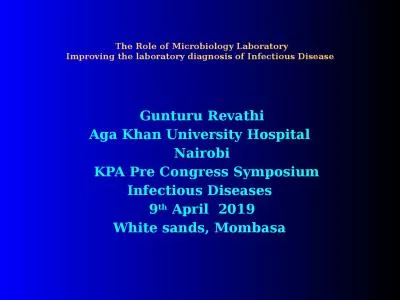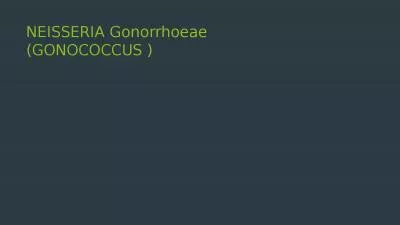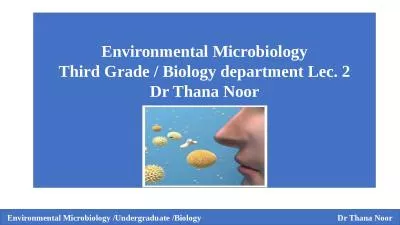PPT-Microbiology Laboratory testing OF Male urethritis
Author : tatyana-admore | Published Date : 2017-07-02
PATH 417A Case 2 Jen Yong Content overview Common pathogens that cause urethritis in men Required Specimens Lab tests performed amp Results 1 Causative pathogens
Presentation Embed Code
Download Presentation
Download Presentation The PPT/PDF document "Microbiology Laboratory testing OF Male ..." is the property of its rightful owner. Permission is granted to download and print the materials on this website for personal, non-commercial use only, and to display it on your personal computer provided you do not modify the materials and that you retain all copyright notices contained in the materials. By downloading content from our website, you accept the terms of this agreement.
Microbiology Laboratory testing OF Male urethritis: Transcript
Download Rules Of Document
"Microbiology Laboratory testing OF Male urethritis"The content belongs to its owner. You may download and print it for personal use, without modification, and keep all copyright notices. By downloading, you agree to these terms.
Related Documents

